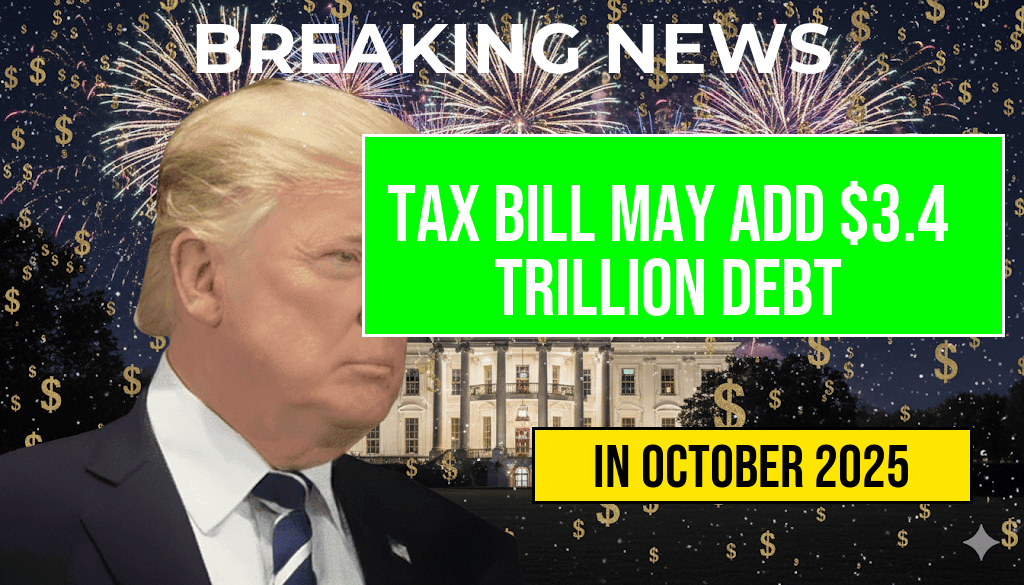Amid ongoing debates over federal fiscal policy, a recent legislative proposal dubbed the “One Big Beautiful Bill” has sparked concern among economists and policymakers alike. Critics warn that if enacted as currently drafted, this comprehensive bill could lead to an unprecedented increase in the national debt—potentially by as much as $3.4 trillion. While proponents argue the legislation aims to stimulate economic growth and fund critical infrastructure, skeptics emphasize the risks of ballooning deficits and long-term fiscal instability. The bill’s intricate provisions, which encompass tax reforms, spending increases, and new federal programs, have prompted widespread scrutiny from financial analysts and government watchdogs. As lawmakers deliberate its passage, understanding the bill’s scope and potential fiscal impact becomes crucial for taxpayers and stakeholders alike.
Understanding the Scope of the “One Big Beautiful Bill”
Legislative Objectives and Components
The bill proposes a multi-faceted approach to address infrastructure needs, social programs, and tax policy. Key elements include:
- Significant investments in transportation, broadband, and clean energy projects.
- Expansion of social safety nets, such as healthcare subsidies and housing support.
- Revisions to corporate and individual tax codes intended to fund new initiatives.
Supporters argue that such measures are necessary to modernize the economy and promote equitable growth, citing studies that suggest infrastructure investment can yield long-term economic benefits (Wikipedia). Conversely, opponents question whether the bill’s fiscal footprint remains sustainable.
Projected Impact on the National Debt
Calculating the Potential Increase
According to analyses by independent financial think tanks, if the bill’s estimated spending and revenue assumptions materialize as planned, the federal debt could swell by approximately $3.4 trillion over the next decade. This projection considers:
- Immediate increases in discretionary spending.
- Projected revenue shortfalls resulting from tax reforms.
- Potential economic growth offsets, which remain uncertain.
Comparison to Historical Benchmarks
| Year | Change in Debt (Billions of Dollars) | Notes |
|---|---|---|
| 2010 | +$1,100 | Post-recession stimulus measures |
| 2017 | +$600 | Tax cuts and spending increases |
| 2020 | +$3,000 | COVID-19 relief packages |
| 2022 | +$1,200 | Inflation-related spending |
Compared to historical trends, the proposed increase associated with the “One Big Beautiful Bill” would be among the largest in recent decades, raising questions about debt sustainability.
Fiscal Concerns and Political Responses
Economic Risks of Rising Debt
Excessive growth in the national debt can lead to higher borrowing costs, reduced fiscal flexibility, and potential crowding out of private investment. Economists warn that sustained deficits may also undermine confidence in U.S. financial stability, especially if coupled with rising interest rates (Federal Reserve).
Political Divisions and Future Outlook
The bill has ignited partisan debates, with fiscal conservatives emphasizing the need for fiscal discipline and progressives advocating for expanded government programs. As negotiations continue, some lawmakers propose amendments to cap spending or increase revenue through targeted tax hikes on high-income earners and corporations. The Congressional Budget Office (CBO) is expected to release a detailed score of the bill’s fiscal impact soon, which could influence legislative decisions (CBO).
Implications for Taxpayers and the Economy
Potential increases in the national debt could translate into higher interest rates, affecting everything from mortgage payments to business loans. Additionally, if the bill’s fiscal deficits lead to inflationary pressures, consumers may face rising prices across the board. While some argue that investing in infrastructure and social programs can enhance productivity and growth, critics caution that unchecked borrowing may compromise economic stability in the long term.
What Comes Next?
Lawmakers are set to debate the bill in committee hearings over the coming weeks, with votes anticipated before the upcoming legislative recess. Stakeholders ranging from economic think tanks to industry associations are closely monitoring the developments, emphasizing the importance of balancing fiscal responsibility with economic growth objectives. For taxpayers, the debate underscores the importance of understanding how federal policies can influence the nation’s financial health and personal economic prospects (Washington Post).
Frequently Asked Questions
What is the main concern regarding the ‘One Big Beautiful Bill’?
The primary concern is that the bill could lead to an increase in the national debt by approximately three point four trillion dollars, potentially impacting the country’s economic stability.
How might the bill affect the federal budget?
The bill’s provisions could significantly increase government spending without corresponding revenue increases, thereby contributing to a substantial rise in the federal budget deficit.
What are the potential economic impacts of the increased national debt?
An increase of this magnitude in the national debt could lead to higher interest rates, reduced public investment, and increased tax burdens on future generations.
Are there any risks associated with passing the bill?
Yes, the bill poses risks such as escalating public debt, potential inflationary pressures, and the possibility of credit rating downgrades that could affect the country’s economic outlook.
What should taxpayers be aware of regarding this bill?
Taxpayers should be aware of the potential fiscal consequences of the bill, including its impact on government spending, public debt, and the overall economic health of the nation.

Leave a Reply